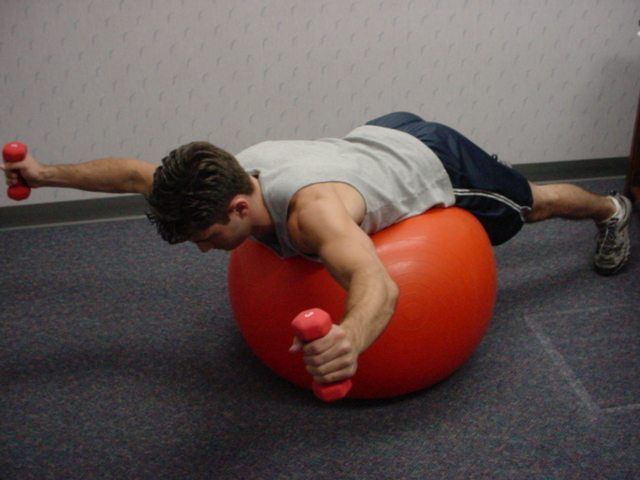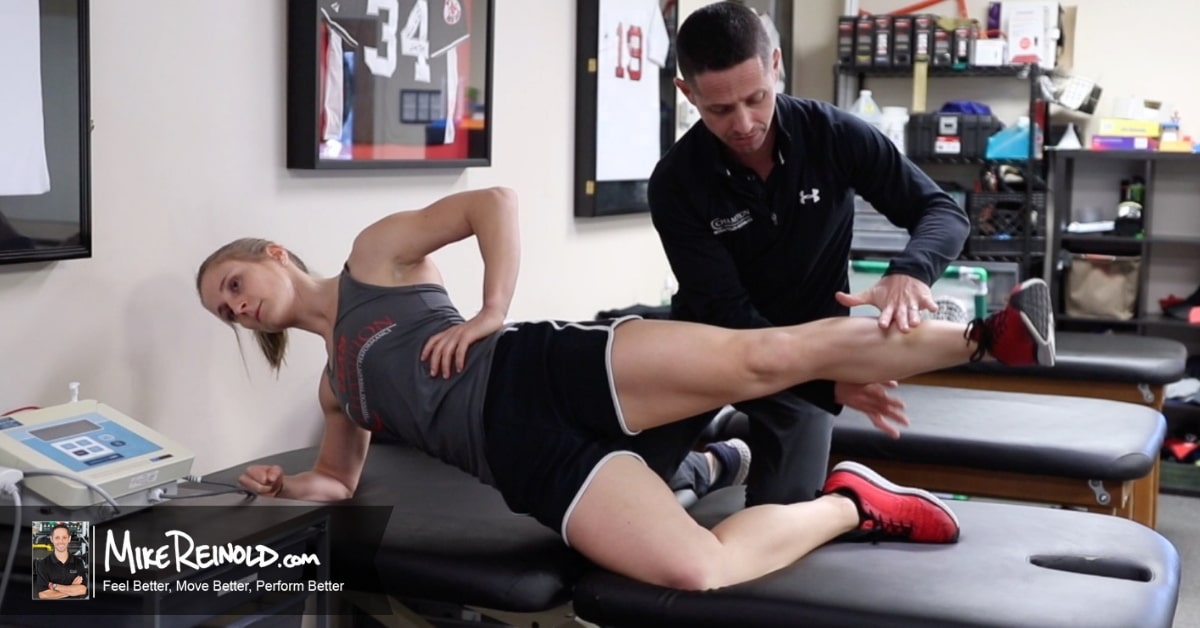I remember when the YTWL shoulder exercises started to become popular. Using the “YTWL” letters was is a pretty good description and easy way for people to remember the shoulder exercises. I even joined the bandwagon and started training everyone bilaterally, even injured people rehabilitating from a shoulder injury. Because the YTWL shoulder exercises are performed bilateral, you can get more work done in a shorter amount of time and work on symmetry. But I was never really pleased with the exercises, trying a bunch of difference variations.
First was standing and bent over – A good place to start, seems simple, right? Well I quickly found out that most people don’t get into a good position to perform these exercises. Most people do not perform this parallel to the ground, but more at a 45 degree angle to the ground. I don’t like that, this increases deltoid involvement, which is the last thing I want when performing rotator cuff and scapular exercises
 Next I tried lying prone on a physioball – what a great idea, right? Train the shoulder and scapular muscles while stabilizing the core! Well, not exactly. Research on this topic has been conflicting, but in general studies have not shown that EMG of the shoulder or core muscles is increased consistently when performing exercises on a physioball, but one trend emerges from the research – force output is reduced. We’ll assume this is similar to the difference between back squats and leg press, you can lift more weight on a leg press because you don’t have to stabilize as much. OK, this might not be that bad, specifically for healthy people or athletes training for function. But remember why we are performing the YTWL shoulder exercises – to enhance shoulder and scapular function, which does not seem to be the emphasis when performing YTWL exercises on an unstable surface.
Next I tried lying prone on a physioball – what a great idea, right? Train the shoulder and scapular muscles while stabilizing the core! Well, not exactly. Research on this topic has been conflicting, but in general studies have not shown that EMG of the shoulder or core muscles is increased consistently when performing exercises on a physioball, but one trend emerges from the research – force output is reduced. We’ll assume this is similar to the difference between back squats and leg press, you can lift more weight on a leg press because you don’t have to stabilize as much. OK, this might not be that bad, specifically for healthy people or athletes training for function. But remember why we are performing the YTWL shoulder exercises – to enhance shoulder and scapular function, which does not seem to be the emphasis when performing YTWL exercises on an unstable surface.
I should also mention that I wasn’t in love with the positioning most people got into when doing these exercises on a physioball. Again, most people were not parallel to the ground and most people can’t perform the exercises through full range of motion as their arms are longer than the physioball. So again, more sacrifices for maximizing benefits of the shoulder and scapular muscles. Plus, seemed to me people probably didn’t have the best core stability and were rocking back into hyperextension of the lumbar spine to complete the movement pattern.
Next, I tried taking away the unstable surface and just performing the YTWL exercises prone on a table. Doing this requires that you pretty much have your head and shoulders out over the edge of the table or bench. Not bad, doing the YTWL shoulder exercises in this position actually seemed to be decent – you can still use your normal weight and you actually had to stabilize the lumbar spine in neutral (if you cue the person to stay flat on the table and not hyperextend). I finally reached the “body parallel to the ground position” I had been searching for with the previous positions.

Why I Don’t Like the YTWL Shoulder Exercises
As you can see, there are some limitations when performing the YTWL shoulder exercises. To summarize, here are some of the limitations of the YTWL exercises that concern me:
- If not performed parallel to the ground, it changes the muscle angle and recruits more deltoid
- Easy to hyperextend the lumbar spine
- Performing on an unstable surface potentially reduces force output and reduces the emphasis of the shoulder and scapular muscles
- Performing on a physioball does not allow for full range of motion
- If performed off the front of a table or bench, recruits too much upper trapezius and levator to help hold the head up.
What I Would Recommend When Using the YTWL Shoulder Exercises
To me, if the primary goal is to increase the strength of the rotator cuff and scapular muscles, I am not a fan of the YTWL exercises. I will perform them all but I really think we need to simplify things and just perform them unilaterally on a stable and parallel to the ground surface (like a treatment table). Yes, you have to turn your head and not stay neutral, but at least the neck muscles are relaxed. You can still perform the shoulder W exercise bilaterally (click the link to see my past post and video demonstration of the shoulder W exercise technique), but I would perform the Y’s, T’s, and L’s unilateral.
If you are not rehabilitating from a specific injury or surgery, or if your primary goal isn’t to maximize shoulder and scapular strength, then performing the YTWL shoulder exercises may be OK especially if your goals are to maximize symmetry or movement function. Just realize that if you have specific deficits you are working on you may be better suited to just perform the exercise the plain old boring way. Perhaps that is your starting point and then when strength is restored, your progress to these other positions. For the rehabilitation and fitness specialists out there, you really need to coach and cue during the bilateral YTWL exercises to make sure some of the compensatory patterns discussed above are not present.
There is a time and place for bilateral YTWL shoulder exercises, but the majority of time I am trying to enhance shoulder and scapular strength and function. I see the bilateral YTWL exercises as a progression once you have adequate strength and stability of the shoulder and scapula. I think performing the YTWL shoulder exercises bilaterally may take away from that goal a little bit, what do you think?






